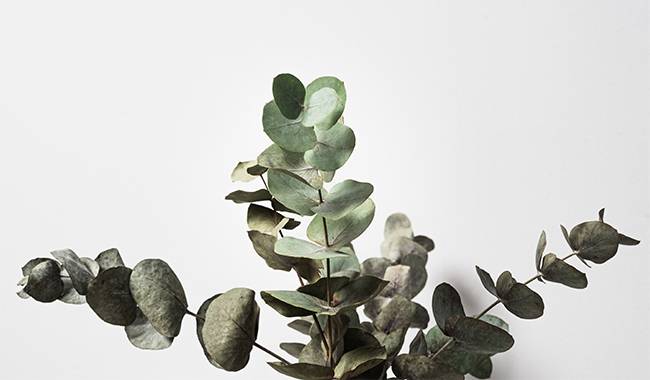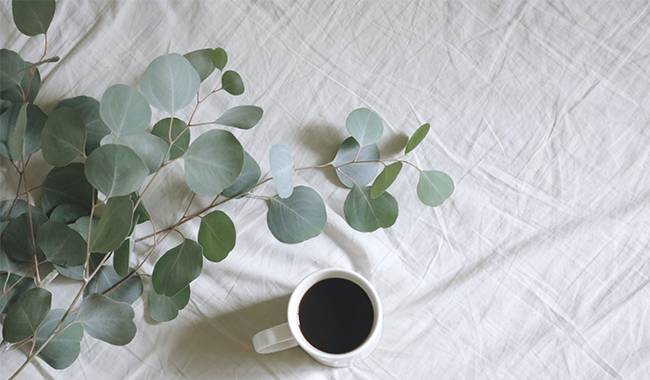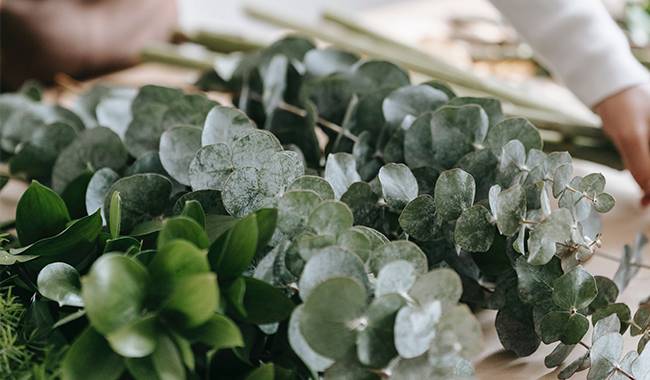
There is nothing rarer and more valuable than Eucalyptus among indoor conifers and bonsai plants. It is a true gem in potted form, with a unique crown and foliage whose fragrance changes the entire atmosphere of a room. And it’s not just a botanical insecticide in character. Eucalyptus is a wonderfully atmospheric plant that has a luxurious, regal appearance. And it requires a lot of care, unlike its more common competitors. Temperature is not the only issue that needs attention. You will learn how to grow Eucalyptusplants in ThumbGarden’s article.
EUCALYPTUS PLANT DESCRIPTION
Eucalyptus’ naturally pyramidal, distinctive blue canopy is a dream for many flower growers. Native to Australia, this plant and source of one of the most important essential oils are rarely found in the room. It is not so much due to its high price as to its high curvature.
Eucalyptus grows slowly, almost imperceptibly, and usually never grows to 40 inches (1 meter) tall in a room. They can be grown both as shrubs and as trees. The transparent and lacy canopy looks like a small elegant miracle in a room with straight shoots and green scaly, coin-like leaves.
Eucalyptus does not look dense because of the special arrangement of the leaves in a ribbed manner toward the light. The leaves have a glossy, waxy blue-gray bronze-green color, and from a distance, they appear to be silvery. The soft, rounded ovate leaves are fragrant and become increasingly hard, slightly elongated, and thin with time.
Eucalyptus blooms are one of the “fluffiest.” Stunning cream, yellowish, and pale pink flowers with swollen petals, hidden by numerous stamens, open one by one in small clusters in the leaf axils or on short stalks. The whimsical conical fruit also emphasizes the plant’s uniqueness.
The plant’s cold-proofing, soothing, toning, and refreshing effects are as valuable as its phytocidal properties. eucalyptus is especially valuable for work areas and offices.
TIPS FOR BUYING INDOOR EUCALYPTUS PLANTS
When purchasing indoor Eucalyptus, it is rare to see the species name or cultivar name in the literature, but all four compact species have bright foliage and are easily recognizable.
Eucalyptus cinerea is a beautiful species with silvery, lusterless egg-shaped leaves that barely change shape.
Eucalyptus globulus is a densely branched, elongated species with yellow bark and long, lance-shaped, bright green leaves.
Eucalyptus gunnii is a round-leaved, slightly aromatic species with a bluish color that changes to green only after maturity. Several species have smaller leaves and an even brighter blue or dark green color.
Eucalyptus parvula is a sprawling, shrubby species with a surprising number of buds and small, bright green, lance-shaped leaves.
GROWING CONDITIONS FOR INDOOR EUCALYPTUS

Eucalyptus will not settle for traditional living conditions. This is why it is so rare indoors. It really likes cool conditions and constant bright light, much easier to achieve in a greenhouse.
Light and location
Eucalyptus needs as much bright light as possible. It is not afraid of direct sunlight, but even east-facing windows can be uncomfortable. The best choice for Eucalyptus is still a southern or partially southern bay window. Extra light in winter is necessary, but it cannot wholly compensate for the lack of light: Eucalyptus should try to provide about 6 hours of direct sunlight per day.
Temperature and ventilation
The most difficult thing about growing Eucalyptus is finding a cool place for it. The plant does not tolerate high temperatures at any age. Even in summer, the ideal temperature for Eucalyptus is only 64 °F (18°C) – and without constant ventilation, it cannot compensate. However, in winter, Eucalyptus should be kept at a temperature between 7 and 15 °F. Above 60 °F (16 °C) can be fatal, especially if care is incorrect.
Without fresh air, Eucalyptus cannot develop properly. Even ventilating the room is not enough: in the warmer months, it is enough to open the windows frequently or bring the plants to the balcony or garden. Cold air currents forbid eucalyptus plants, but warm air currents are not afraid of the plants.
CARING FOR EUCALYPTUS PLANT AT HOME

Your Eucalyptus at home does not tolerate failure. Its dead leaves will not regenerate and can easily fly off if not cared for properly.
Watering and air humidity
Water Eucalyptus heavily in summer. Do not leave water in the trays and allow the top substrate to dry out. Starting in the fall, water sparingly and let the soil dry out only a little more. Eucalyptus do not tolerate stagnant water or waterlogging, but it is much riskier for them to dry out the substrate, even to the middle of the root ball, so that the top shoots dry out and the leaves are lost.
Eucalyptus is best watered with rain or meltwater at a temperature not too different from room temperature. The only thing Eucalyptus doesn’t need is air humidity. Spraying and wiping will not help, and the leaves should be cleaned with a shower.
Fertilization and fertilizer composition
It is best to use a fertilizer specifically for Eucalyptus or bonsai plants – at least: a general fertilizer for deciduous plants with reduced phosphorus and nitrogen is fine. Fertilize plants throughout the year – every two weeks in spring and summer, and once a month in fall and winter, at half the usual rate.
Pruning and shaping of Eucalyptus
The slow growth of Eucalyptus does not need to be curbed. The plant is most effective in its natural form when allowed to grow freely. However, if desired, it can be shaped by regular cutting, pruning, stripping, and shaping. Eucalyptus can be used to make boulders, topiaries, and bonsai. Pruning is done in spring, with additional pruning in summer if necessary. The plant can easily be cut to more than half the length of the shoots.
Pests, diseases, and problems in cultivation
Eucalyptus is virtually indestructible. If the plant has been invaded by scabies or spider mites from a pest neighbor, insecticide treatment should be started as soon as possible.
Eucalyptus plants are susceptible to root rot due to overwatering. This manifests itself as leaves turning white and dropping in large numbers. On the other hand, if the leaves turn yellow before dropping, cold or hard water may be the cause.
Transplanting, containers, and substrates
Eucalyptus plants’ transplant does not require moving the soil, as the roots fill the substrate in the previous container – only when the roots start to appear in the drainage holes.
From a stylistic point of view, fancy cubes, polygons, pots with fancy designs, or vintage painted or decorated models are the best choice for containers. Eucalyptus needs natural materials and stability. They are planted in small containers. The diameter of the container should only increase by 1 inch (2.5 cm).
For young Eucalyptus, the pot should be only 1-2 inches larger than the root ball. If the plant is growing too vigorously, reducing the pot and trimming the root system will help limit the growth of the canopy.
A general-purpose substrate containing peat and a thinning agent can be used for this plant. Perlite or vermiculite, sphagnum soil, and coarse sand can also be added to prevent compaction. High drainage in the bottom of the container is mandatory.
A basic rule for transplanting Eucalyptus is to be very careful afterward. It is best not to water lightly for 4-5 days after transplanting, resume watering gently and slowly, slightly moisten the soil and wait for the signal for the plant to adapt and resume its usual watering pattern.
Propagation of Eucalyptus indoors
Eucalyptus can be propagated from seed, which keeps its germination rate high for a long time. Seedlings are very capricious in the early stages of growth. Sow the seeds into the prevailing soil, mixed halfway with sand, and sown shallowly. Keep under glass or film at a stable temperature of about 64 °F (18 °C) and a 95-100% stable substrate humidity.
Seedlings are susceptible to overwatering and dryness and need regular ventilation and protection from heat. They are only picked when they reach a height of 1 inch (2.5 cm) and are transferred without touching the roots.
Eucalyptus cuttings are also not the easiest to take. The substrate should be kept moist, and the lighting should be bright but not in direct sunlight. After rooting, further light can be added by slightly drying the substrate.







